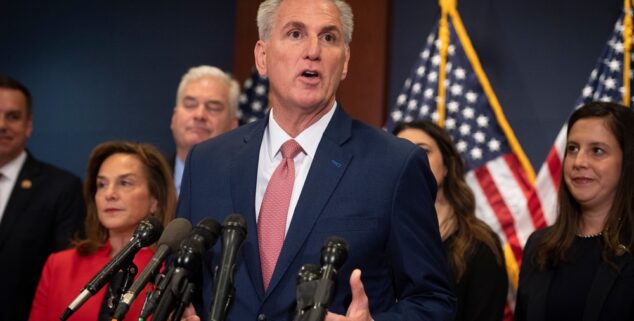News
No, Newsom can’t just name a replacement for Kevin McCarthy
 Image by Consolidated News Photos
Image by Consolidated News PhotosWhen U.S. Sen. Dianne Feinstein died in late September, there was immediate speculation as to who Gov. Gavin Newsom would appoint to fill out much of the remainder of her term.
But when former House Speaker Kevin McCarthy announced today that he will be leaving Congress at the end of the year, the talk has all been about who will run in the special election to replace him.
Wait. Why wouldn’t the governor appoint a temporary replacement for McCarthy too?
The process for filling vacancies in the House of Representatives and the Senate are different under the U.S. Constitution.
Article I, section 2 of the Constitution requires that the chief executive of each state call a special election to fill any vacancies among members of their House delegation.
However, the Seventeenth Amendment, which authorized voters beginning in 1913 to directly elect U.S Senators, includes a provision that gives a state’s legislature the option to authorize their governors to make temporary appointments to fill Senate vacancies until a special election can be held.
The Congressional Institute, a non-partisan, not-for-profit corporation in Alexandria, Va. “dedicated to helping Members of Congress better serve their constituents and helping their constituents better understand the operations of the national legislature,” explained in an October 2022 article on its website that the differences in how Senate and House vacancies are filled “can be traced to the Framers’ debates over how to create Congress.”
As you might recall from your civics classes, our Founding Fathers designed Congress to have two chambers as a check and balance against tyranny. In Federalist 51, James Madison wrote in 1788 that “different modes of election” is one way to combat oppressive government rule.
Today, 37 states have opted to temporarily fill Senate vacancies through gubernatorial appointment. The remaining 13 have not taken that option; they may only fill vacancies through special elections, like in the House.
That’s why the Constitution originally mandated that voters directly elect members of the House, but Senators were elected by state legislatures. As writers Mark Strand and Tim Lang noted for the Congressional Institute, the Constitution originally called for state legislatures to fill Senate vacancies and authorized governors to appoint senators if their legislature was in recess.
Then, in 1911 and 1912, Congress considered a joint resolution that eventually became the Seventeenth Amendment.
As Strand and Lang wrote, “When the Senate debated the House’s joint resolution in May 1911, Senator Joseph Bristow of Kansas offered an amendment in the nature of a substitute which the Senate adopted. During the debate, he said he based the language for filling up a Senate vacancy on the language that the Constitution used to fill up a House vacancy. He said he also modeled the language allowing the legislatures to authorize the governors to make temporary appointments on the Constitution’s provision empowering the executive to do so.”
The Congressional Institute writers said that the Senate was evenly divided on Bristow’s amendment. It only passed after the Vice President at the time, James Sherman, stepped in to cast the deciding vote.
Today, 37 states have opted to temporarily fill Senate vacancies through gubernatorial appointment. The remaining 13 have not taken that option; they may only fill vacancies through special elections, like in the House.
For constitutional scholars, this is old hat. But these differences are lesser known to the public, probably because Senate and House vacancies rarely occur at the same time in the same state.
We just happened to have the perfect storm in California this fall to expose these procedural differences.
Want to see more stories like this? Sign up for The Roundup, the free daily newsletter about California politics from the editors of Capitol Weekly. Stay up to date on the news you need to know.
Sign up below, then look for a confirmation email in your inbox.

Leave a Reply